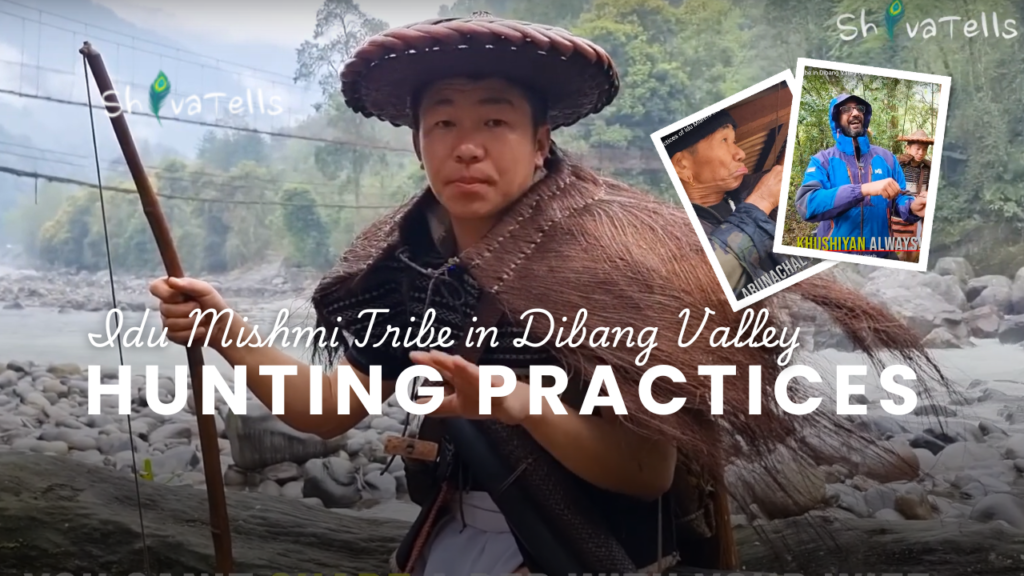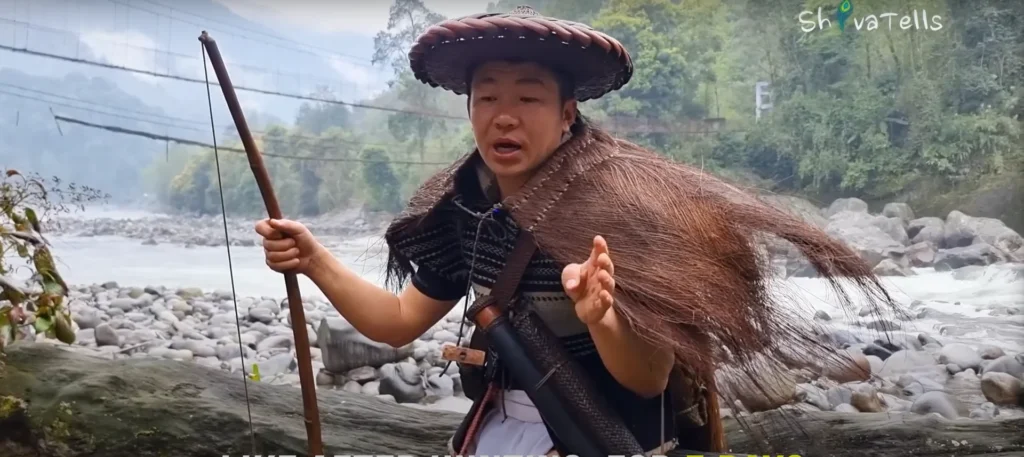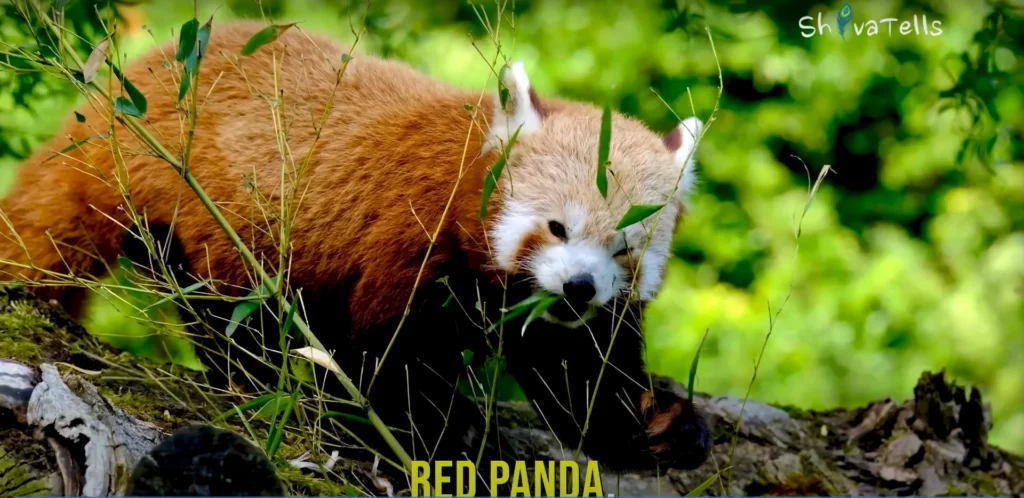I found myself in the heart of a dense, green jungle, surrounded by the towering trees and misty hills of the Dibang Valley. This is where the Idu Mishmi tribe lives—a tribe that holds onto ancient traditions in this remote corner of Arunachal Pradesh. As a travel vlogger, I’m always curious about how people live. And this time, I got to experience the unique hunting practices of the Idu Mishmi tribe.

Table of Contents
Introduction to the Idu Mishmi Tribe

The Idu Mishmi tribe is known for their deep connection to the forest. They live in the Dibang Valley, a place full of wild beauty and mystery. The tribe’s culture is old, and they respect nature like no other. When I arrived here, I felt like I had stepped back in time.
The Significance of Hunting in Idu Mishmi Culture
Hunting, I realized, isn’t something the Idu Mishmi take lightly. In fact, it’s considered a taboo for many. For them, hunting is not just a task but a way of giving and taking. They believe that if they take something from nature, they must give something back. This is a beautiful part of their culture that shows deep respect for life.
Traditional Tools and Methods Used for Hunting
I was amazed to see the simple yet effective tools they used. The hunters here rely on handmade bows, arrows, and traps. The tools may be old-fashioned, but they are sturdy and designed with care. Some hunters even wear homemade armor to protect themselves from wild animals. Their methods show how skillful and resourceful they are.
Rituals and Spiritual Beliefs Surrounding Hunting
Before hunting, the Idu Mishmi perform special rituals. These rituals are a way of connecting with the spirits of the forest. It’s their way of asking for permission to hunt. The rituals help them stay grounded, reminding them of their place in the world.
Sustainable Hunting Practices of the Idu Mishmi Tribe
One thing that struck me was how they practice sustainable hunting. They hunt only when necessary and never take more than what they need. This careful approach ensures that the balance of nature is kept intact. It’s not just about survival, it’s about respecting the cycle of life. They also follow strict rules, like never hunting young or pregnant animals.
Challenges Faced by the Idu Mishmi Hunters Today
In today’s world, the Idu Mishmi hunters face many challenges. New laws have made hunting difficult for them. The modern world is closing in, and their traditional way of life is at risk. As I listened to their stories, I realized that they are fighting hard to keep their culture alive while adjusting to new realities.
Read one more story of Idu Mishmi Tribes – The Idu Mishmi Tribe (Tiger Tribe): Eco-Warriors of Arunachal Pradesh
Wildlife in Dibang Valley: The Hunters’ Prey
The Dibang Valley is home to many rare animals, like the Mishmi takin, red pandas, and snow leopards. These animals are part of the tribe’s world. The hunters know the habits of each creature, and their knowledge of the wildlife here is impressive. They use this knowledge not just for hunting but for conservation as well.
Gender Roles in Idu Mishmi Hunting Practices
When it comes to hunting, men usually take the lead. But that doesn’t mean women have no role. Women help by preparing food, making tools, and participating in rituals. This balance keeps the tribe strong, with everyone contributing in their own way.
The Future of Idu Mishmi Hunting Traditions

As I spent time with the Idu Mishmi, I wondered what the future holds for their hunting traditions. With younger generations being exposed to modern life, there’s a risk of losing these old practices. However, there are efforts to preserve their way of life, including educating young people about their culture and the importance of responsible hunting.
Experiencing Idu Mishmi Culture as a Visitor
If you ever visit the Dibang Valley, you can learn so much from the Idu Mishmi tribe. They welcome travelers who want to understand their way of life. But it’s important to be a responsible visitor, respecting their culture and the land they call home. The best way to experience their culture is by observing and learning, not just from their hunting practices but from their overall respect for nature.
How to Reach Dibang Valley
Reaching Dibang Valley in Arunachal Pradesh is an adventure in itself, but the journey is rewarding with the stunning landscapes that greet you.
- By Air
The nearest airport is Dibrugarh Airport in Assam, around 200 km from Roing, the entry point to Dibang Valley. From the airport, you can hire a taxi or take a bus to Roing. - By Train
The closest railway station is Tinsukia Junction in Assam, which is well-connected to major cities like Guwahati and New Delhi. From Tinsukia, you can take a taxi or bus to Roing. - By Road
Dibang Valley is accessible via NH13, and the roads leading to Roing and Anini, the district’s headquarters, are quite scenic. The drive through the mountains is beautiful, but keep in mind that some roads might be challenging, especially during the monsoon.
Most Tourist Visiting Places in Dibang Valley
- Roing
Roing is the gateway to Dibang Valley and offers panoramic views of mountains and rivers. It’s a peaceful town where you can explore local markets and interact with the Idu Mishmi tribe. - Mehao Wildlife Sanctuary
This sanctuary is a haven for nature lovers. It’s home to a wide range of animals, including tigers, snow leopards, and rare birds. Trekking through the dense forests here offers a great chance to spot wildlife. - Mayudia Pass
Located about 56 km from Roing, Mayudia Pass is a snow-covered paradise in winter. The views of the surrounding mountains are breathtaking, making it a must-visit for anyone who loves high-altitude landscapes. - Mehao Lake
A natural high-altitude lake, Mehao Lake is serene and surrounded by lush forests. You can trek to the lake, and the calm surroundings make it a perfect spot for nature lovers. - Hunli
A small picturesque village located along the way to Anini, Hunli is known for its lush green hills and beautiful surroundings. The Sally Lake and the local tribal culture here are worth exploring. - Anini
Anini is the headquarters of the Dibang Valley district and offers some of the best views of the Himalayas. It’s an ideal place for those looking to experience the untouched beauty of Arunachal Pradesh. - Idu Mishmi Tribal Villages
The Idu Mishmi tribe lives in several villages scattered around Dibang Valley. Visiting these villages gives you a glimpse into their unique culture and traditional practices, including their sustainable hunting methods. - Dibang River
The Dibang River flows through the valley, offering opportunities for river rafting and exploring the scenic riverbanks. It’s one of the main attractions for adventure seekers.
Until next time, may the stories of these remote lands inspire you to explore the hidden treasures of our world.
Read More Tribal Stories-
- Ollo Tribe’s Warang Festival: Hornbill Celebration
- The Enduring Nomadic Gaddi Tribe: A Journey Through Time
